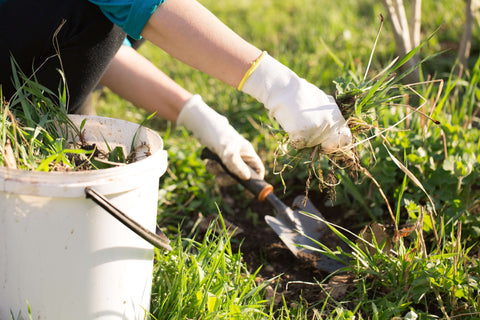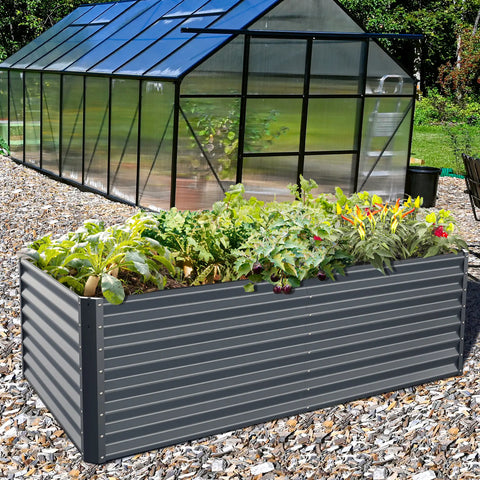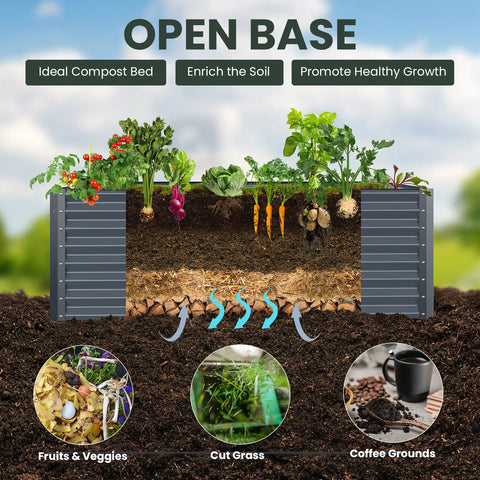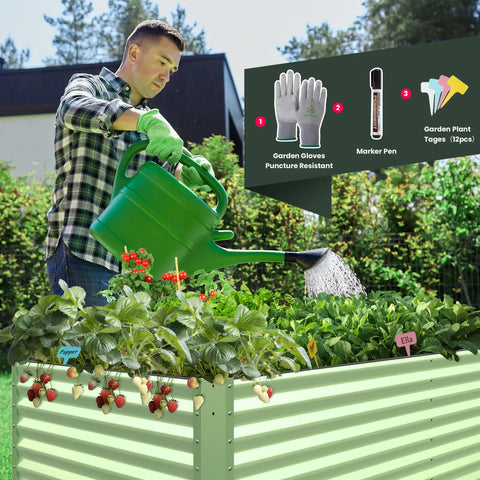Gardening is a healthy activity. You'll burn calories, get vitamin D exposure, build strong bones, and get a little cardio. If you want your plants to be as healthy and thriving as you are, consider planting a raised garden.

Some believe that the high beds in the garden originated in the Middle Ages. Others claim it has been around for more than 2,000 years. The important takeaway is that it works. It has obvious advantages, and once you try it, you'll never go back to ground gardening. But you have to know what you're doing to be successful. This article will outline what you need to know to have a perfect garden.
What is a raised garden?
A raised garden sits on your existing soil. It can be just a mound, or it can have sides that make it look like a box. Some raised gardens are only a few inches high, while others are several feet high. The bed should be small enough so you don't have to step on every plant
No matter what your native soil is like, a raised garden will give you ideal growing conditions. It doesn't matter if your yard has sandy soil or clay, because your ground has a raised garden bed filled with specially made, nutrient-rich soil. This allows for better moisture retention or drainage, depending on your needs.
With a raised garden, you get a longer growing season. Soil in a raised bed garden warms up faster than ground soil, which means you can plant earlier in the season.
A raised garden protects against weeds, insects and other pesky animals. You can install a weed barrier underneath the raised garden to prevent weeds and gophers from entering your garden bed from below. The sides keep insects and small animals out easily. And, if you still have problems with larger animals and birds, you can add deer fencing or netting to the bed to keep them safe.

Tips for making the perfect raised garden bed
Location problem
Raised garden beds must be strategically placed. You can't put it where there's room. The space must have at least 6-8 hours of sunlight throughout the day. Gardens should not be located in low areas where water has accumulated. If possible, plant your garden in a north-south alignment that provides better sun coverage.
Use durable materials
If your garden bed has side walls, which is recommended but not always necessary, then use waterproof, rot resistant materials that won't leach chemicals into your bed. Cedar and redwood are the best choices, but you can also use materials like landscape brick or retaining wall brick.

Keep size controllable
You need to be able to reach each plant without stepping on the garden and without exertion. For most people, that means no more than four feet wide -- if you can get in from the sides. However, you can make as many gardens as you like, although most are 4, 6 or 8 feet in length.
Consider height/depth
If you are planting plants with deeper roots, such as tomatoes or asparagus, make sure your bed is tall enough to accommodate these roots. In some cases, you may need to dig into the ground under a raised bed to add a little depth. For most plants, however, 12 inches is sufficient.
Fill with nutrient-rich soil
The purpose of using raised garden beds is to obtain optimum conditions. This usually means that the native soil will not work. The best soil is sandy loam, which is loose and rich in organic matter. It's best to fill your bed with soil specifically designed for garden raised beds. Alternatively, you can try a combination of potting soil and garden soil, but you may not find the ideal combination for several seasons.

Start with herbs
If this is your first garden, ease into it. Herbs are more tolerant of neglect and poor growing conditions, so you have a better chance of success. Once you get a feel for gardening, you can try more challenging vegetables like potatoes, carrots, cucumbers, and lettuce.
Water is a root, not a leaf
Plants drink water through their roots, not their leaves. When watering a raised bed in your garden, it is best to use a drip irrigation system or a soaking hose placed at the base of the plant. In short, the wetter a plant's leaves are, the more likely it is to get sick.









